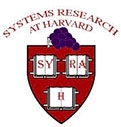6.2 PlanetLab Snapshots
We took snapshots of each version by running clients on approximately 220 PlanetLab nodes. Each snapshot lasted for at least three days, and logged updates with approximately 10,000 Azureus nodes. We collected a snapshot for each of the three versions in March, July, and September 2006, respectively. Note that these instrumented clients never stored or transferred any content that travels over the Azureus network.
  |
We compare data gathered from the different versions in Figure 7. Because the data are aggregated across roughly the same source PlanetLab nodes, the three snapshots provide a reasonable, though imperfect, way to isolate the effects of the different techniques. In all cases, we find 4D+H is more accurate and stable than both the original 2D+H and our initial rollout of 5D.
Our first revision had mixed results. Based on this data and on simulations with and without height, the data convey that the removal of height damaged accuracy more than the filters aided it. In retrospect, given the Azureus round trip time distribution (see Section 3.2), in which 7.6 percent of the node pairs exhibit round trip times greater than or equal to one second, it is not surprising that using height helped many nodes find a low error coordinate. In addition, given that two dimensions are enough to capture much of Azureus' inherent dimensionality, it is also not surprising that the addition of three dimensions did not radically improve accuracy. Although the 5D coordinates are less accurate, they are more than 2-1/2 orders-of-magnitude more stable because the latency filters prevent anomalous measurements from reaching the update algorithm.
Our second change was more successful. The introduction of neighbor decay and the re-introduction of height in 4D+H create a much more accurate coordinate space than either of the previous two snapshots. This increase in accuracy occurs because neighbor decay enables nodes to triangulate their coordinates with a larger fraction of the network (and their neighbors are doing the same) and because height supplies the numerous nodes on DSL and cable lines with the additional abstract distance over which all their physical communication must travel.
We first evaluated neighbor decay in simulation. To confirm its continued effectiveness in a live system, we performed an experiment where we monitored the convergence of a node with and without neighbor decay enabled as part of the 4D+H coordinate system. In an average of three trials, we found neighbor decay improved median accuracy by 35, 40, and 54 percent at the 15, 30, and 60 minute marks respectively.
Jonathan Ledlie 2007-02-23